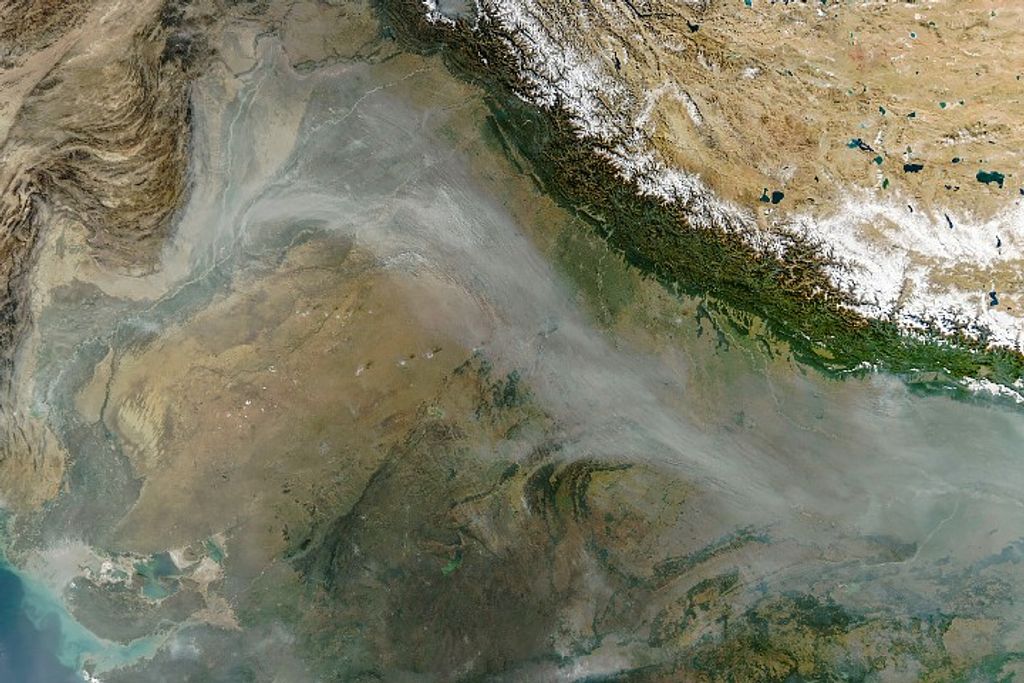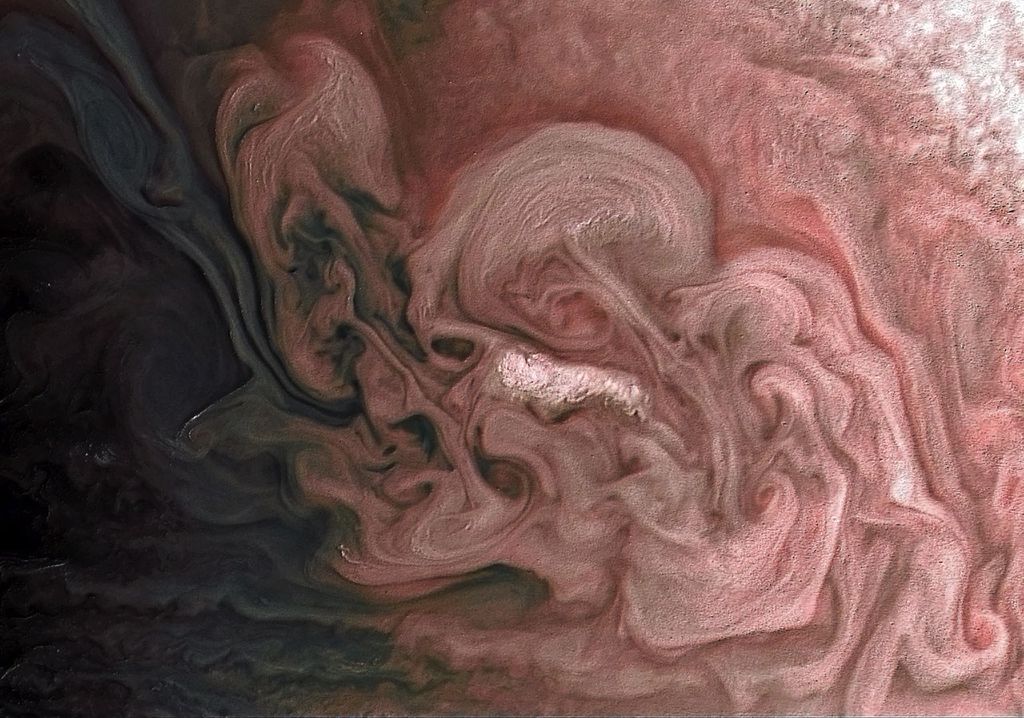1 min read
Rocky Exoplanet TRAPPIST-1 c (Artist Concept)
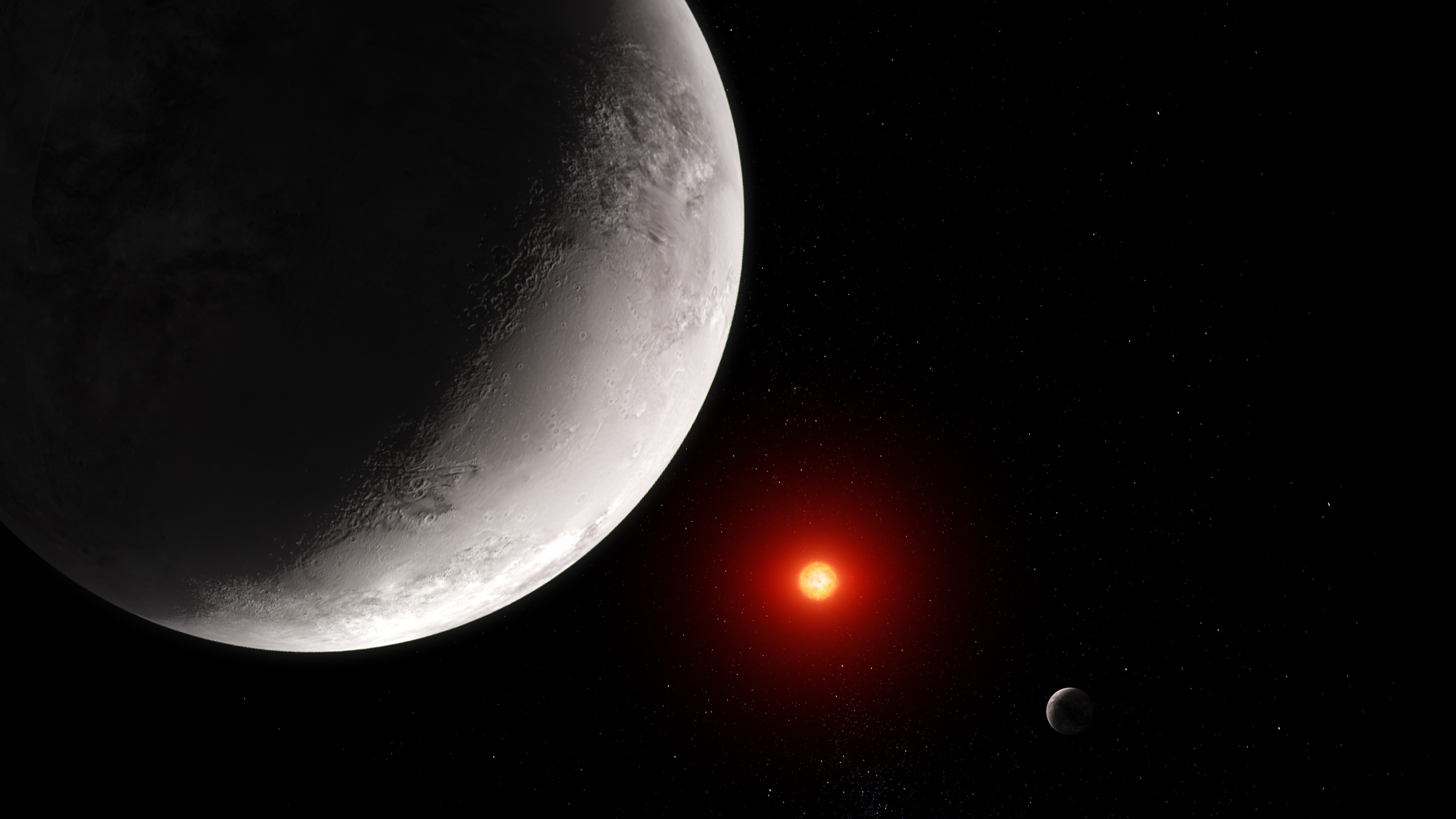
This artist' concept shows what the hot rocky exoplanet TRAPPIST-1 c could look like based on this work. TRAPPIST-1 c, the second of seven known planets in the TRAPPIST-1 system, orbits its star at a distance of 0.016 AU (about 1.5 million miles), completing one circuit in just 2.42 Earth-days. TRAPPIST-1 c is slightly larger than Earth, but has around the same density, which indicates that it must have a rocky composition. Webb’s measurement of 15-micron mid-infrared light emitted by TRAPPIST-1 c suggests that the planet has either a bare rocky surface or a very thin carbon dioxide atmosphere.
Illustrated in the background is TRAPPIST-1 b, the innermost planet in the TRAPPIST-1 system. TRAPPIST-1 b is also rocky and appears to have no substantial atmosphere.
The star, TRAPPIST-1, is an ultracool red dwarf (M dwarf) with a temperature of only 2,550 kelvins (about 4,150 degrees Fahrenheit) and a mass just 0.09 times the mass of the Sun.
This illustration is based on new data gathered by Webb’s Mid-Infrared Instrument (MIRI) as well as previous observations from other ground- and space-based telescopes. Webb has not captured any images of the planet.
About the Object
- ConstellationConstellationOne of 88 recognized regions of the celestial sphere in which the object appears.Aquarius
- DistanceDistanceThe physical distance from Earth to the astronomical object. Distances within our solar system are usually measured in Astronomical Units (AU). Distances between stars are usually measured in light-years. Interstellar distances can also be measured in parsecs.40 light-years
- Object NameObject NameA name or catalog number that astronomers use to identify an astronomical object.TRAPPIST-1 c
- Object DescriptionObject DescriptionThe type of astronomical object.Exoplanet
- Release DateJune 19, 2023
- Science ReleaseWebb Rules Out Thick Carbon Dioxide Atmosphere for Rocky Exoplanet
- CreditIllustration: NASA, ESA, CSA, Joseph Olmsted (STScI); Science: Sebastian Zieba (MPIA), Laura Kreidberg (MPIA)
Related Images & Videos
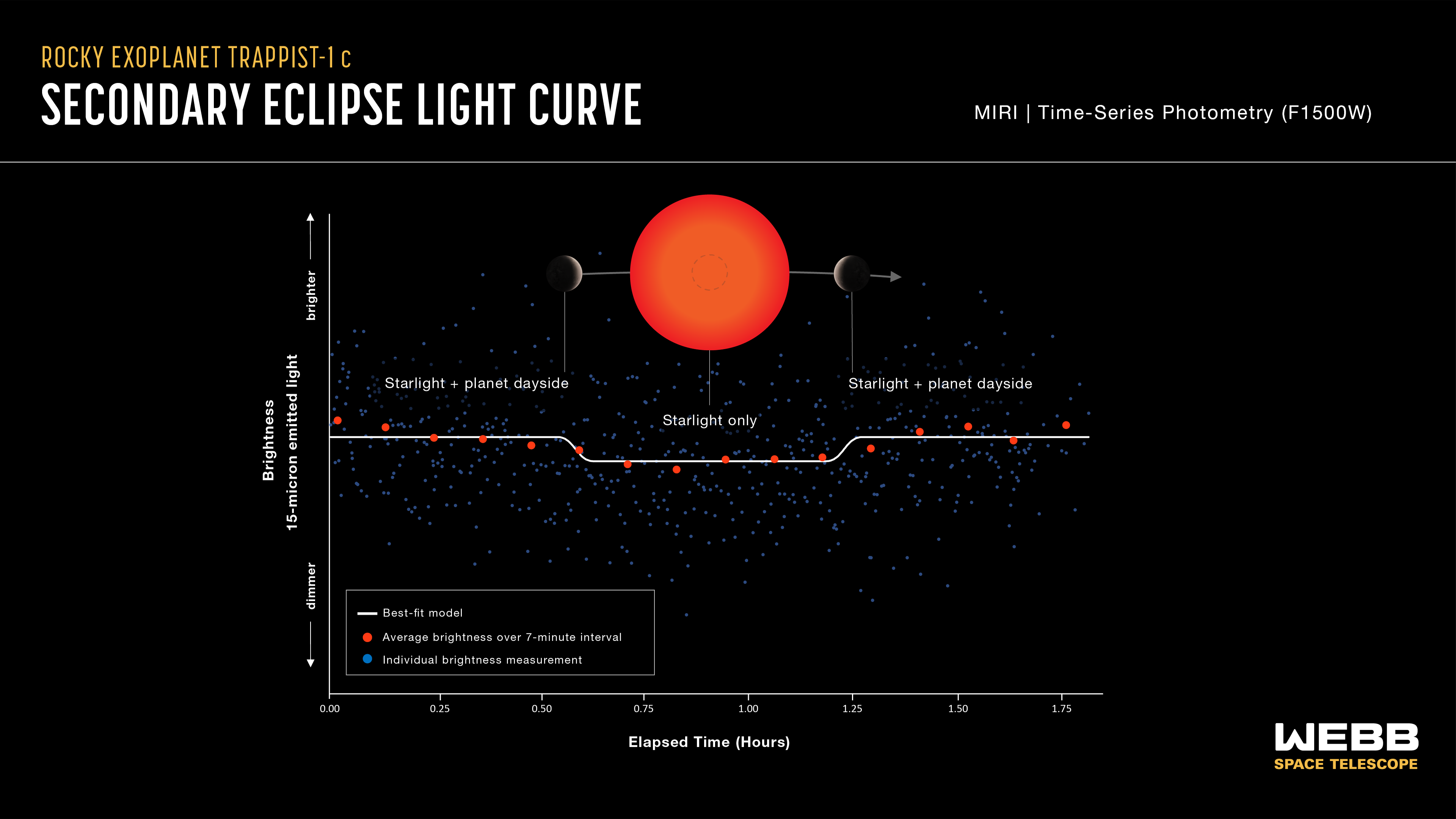
TRAPPIST-1 c Light Curve
This light curve shows the change in brightness of the TRAPPIST-1 system as the second planet, TRAPPIST-1 c, moves behind the star. This phenomenon is known as a secondary eclipse . Astronomers used Webb’s Mid-Infrared Instrument (MIRI) to measure the brightness of mid-infrared...
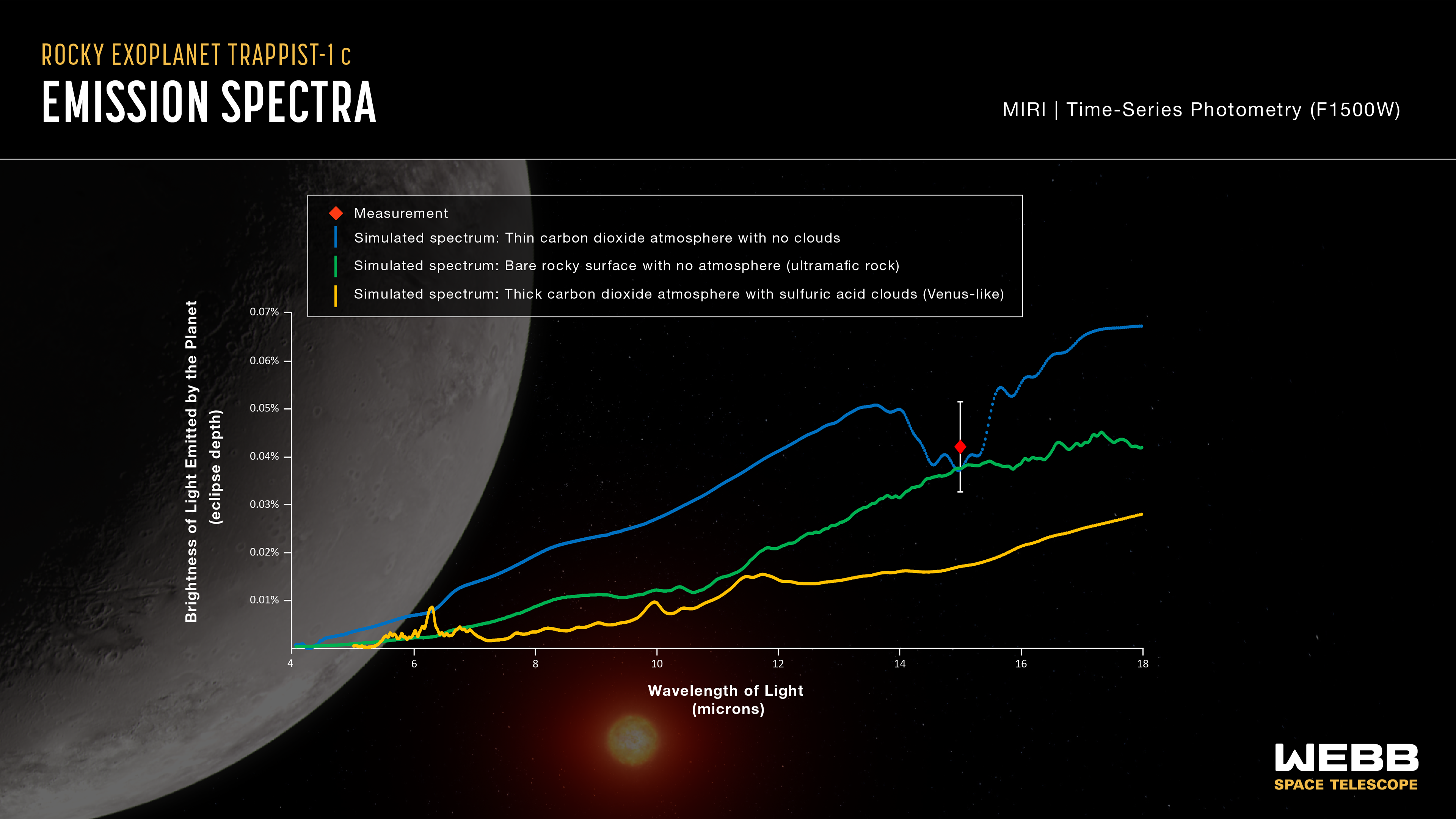
TRAPPIST-1 c Emission Spectra
This graph compares the measured brightness of TRAPPIST-1 c to simulated brightness data for three different scenarios. The measurement (red diamond) is consistent with a bare rocky surface with no atmosphere (green line) or a very thin carbon dioxide atmosphere with no clouds...
Share
Details
Laura Betz
NASA’s Goddard Space Flight Center
Greenbelt, Maryland
laura.e.betz@nasa.gov
NASA, ESA, CSA, Joseph Olmsted (STScI)
Sebastian Zieba (MPIA), Laura Kreidberg (MPIA)









